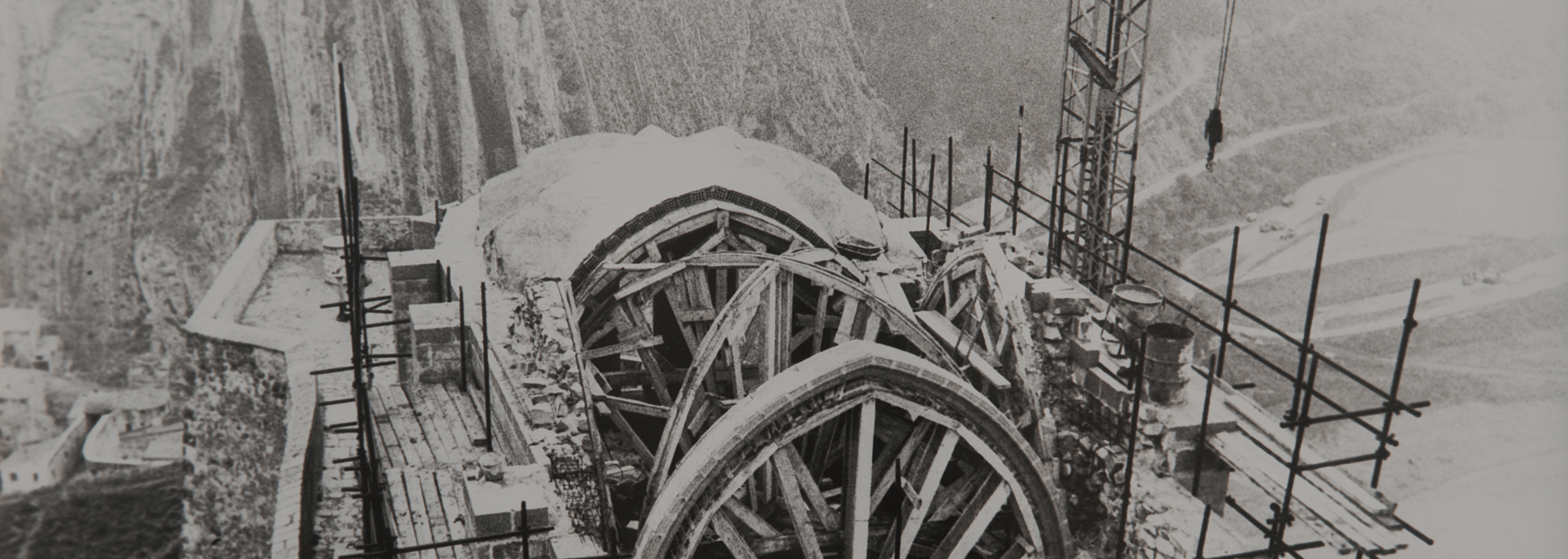
Architecture
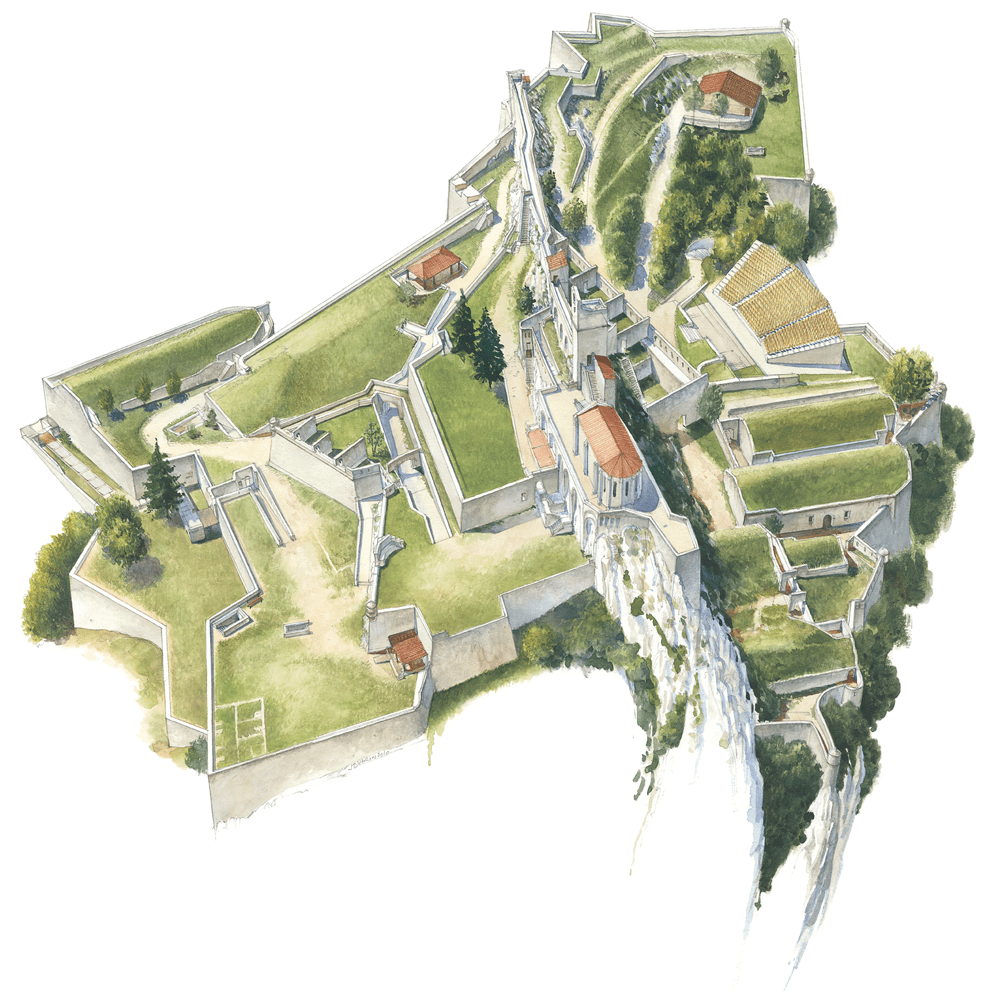
Open-air theatre
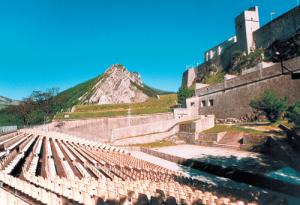
Created in 1928, the green theatre (1,500 seats) is set in the tiered bastions of the north face of the Citadel. In the background, the imposing rampart dominated by its keep. A grandiose setting which, every summer, welcomes the greatest names in music, dance and theatre during the Nuits de la Citadelle festival, one of the oldest festivals in France.
The chapel
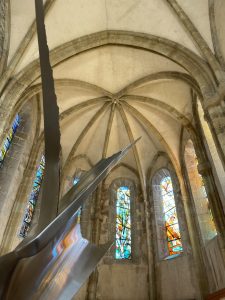
It was built in the 15th century.e It stands on a terrace supported by arcades resting on powerful pillars. Its two-bay nave opens onto a choir flooded with light from seven windows. This is the fine late Gothic style, with the ribs adorned with a flat. The chapel soon lost its religious function.e In the 17th century, it was called a dungeon, with floorboards, and was used as accommodation for the king's lieutenant. Later, it was used as barracks and then became a prison. Restored around 1935, three quarters of it was destroyed in the bombardment of August 1944. It was not rebuilt until 1970, under the pressure of the restorations carried out by ATM. In 1980, Notre-Dame du Château's stained glass windows were restored to their former glory by master glassworker Claude Courageux. It now houses prestigious exhibitions and a bookshop devoted to the region. A mass is celebrated here every year on 14 August in memory of the victims of the wars.
The "Zig-zag" drawbridge
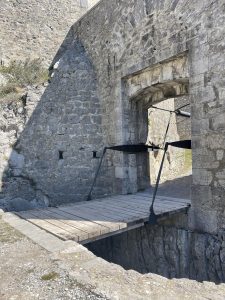
En 1860, la Citadelle de Sisteron possédait trois ponts-levis en Zig-zag. Un au Nord pour améliorer la défense de l’accès au grand retranchement, deux au sud, réalisés selon le projet du capitaine Noël, pour remplacer l’accès malaisé depuis les ponts-levis à flèche et les rampes raides et tortueuses incommodes pour acheminer les canons. Le pont-levis en Zig-zag est un ouvrage en métal qui se meut par l’effet d’un balancier. Plus de détails sur la page du pont-levis : Pont-levis dit en zig-zag
The dungeon
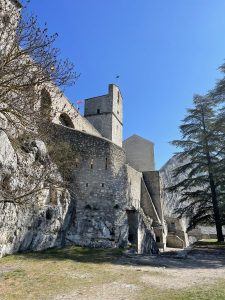
The belfry tower, also known as the "Clock Tower", was home to the 15th-centurye the town bell and clock. The clock, installed in 1402, marked 24 hours. It was replaced in the XVIe with a 12-hour dial. Refurbished as a military building in the early 17th centurye the tower seemed to be reserved for use as a prison. Prince John Casimir Vasa, the future King of Poland, was imprisoned here on the orders of Richelieu from February to August 1639. His dungeon has now been reconstructed.
The parapet walk
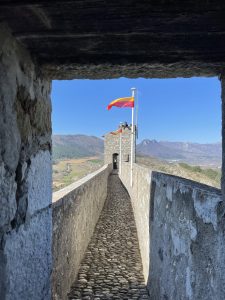
A large curtain wall on the rocky ridge, the parapet walk formed the northern front of the city wall in the Middle Ages. It was incorporated into the Citadel as soon as it was built in the 16th century and then extended at the end of the 17th century over a series of arcaded buttresses, giving the Citadel its characteristic appearance.e ,e .
The powder keg
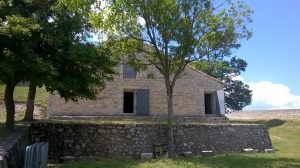
Built to Vauban's plans after his visit to the Citadel in 1692, it is, along with the well, the only achievement of his ambitious project. Smaller than the typical powder magazines, it has no side buttresses and houses two magnificent vaulted rooms on top of each other. It is ventilated by means of staggered vents. Recently restored, the Powder Magazine is now open to the public.
The watchtower of the Durance bastion and its lady
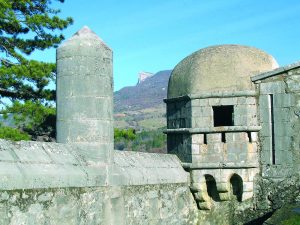
This magnificent watchtower was built at the end of the 16th century.e This magnificent watchtower, built at the end of the 16th century, is distinguished from the others by its octagonal plan, corbelled on corbels. It commanded the northern glacis of the Citadel. In 1853, a "Dame", so called because it was impossible to "embrace" (go around), was added to the bastion's defensive system.
Underground staircase
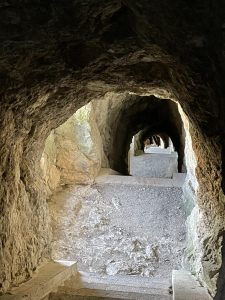
This very impressive staircase was dug into the rock in 1840-45. It linked the Citadel to the northern gate of the town, known as the Porte du Dauphiné, which was destroyed during the bombing of August 1944. It has 258 steps and is pierced by several daylight and shooting caves.
The Devil's Cabin
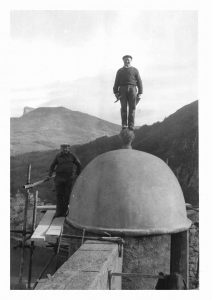
This is the most spectacular of the Citadel's gatehouses. Like a figurehead towering over the Durance, it appeared in the 14th century.e and was redesigned in the 17th century.e Legend has it that it could only have been built with the help of the devil in exchange for the mason's soul.
Open-air theatre

Created in 1928, the green theatre (1,500 seats) is set in the tiered bastions of the north face of the Citadel. In the background, the imposing rampart dominated by its keep. A grandiose setting which, every summer, welcomes the greatest names in music, dance and theatre during the Nuits de la Citadelle festival, one of the oldest festivals in France.
The chapel

It was built in the 15th century.e It stands on a terrace supported by arcades resting on powerful pillars. Its two-bay nave opens onto a choir flooded with light from seven windows. This is the fine late Gothic style, with the ribs adorned with a flat. The chapel soon lost its religious function.e In the 17th century, it was called a dungeon, with floorboards, and was used as accommodation for the king's lieutenant. Later, it was used as barracks and then became a prison. Restored around 1935, three quarters of it was destroyed in the bombardment of August 1944. It was not rebuilt until 1970, under the pressure of the restorations carried out by ATM. In 1980, Notre-Dame du Château's stained glass windows were restored to their former glory by master glassworker Claude Courageux. It now houses prestigious exhibitions and a bookshop devoted to the region. A mass is celebrated here every year on 14 August in memory of the victims of the wars.
The "Zig-zag" drawbridge

En 1860, la Citadelle de Sisteron possédait trois ponts-levis en Zig-zag. Un au Nord pour améliorer la défense de l’accès au grand retranchement, deux au sud, réalisés selon le projet du capitaine Noël, pour remplacer l’accès malaisé depuis les ponts-levis à flèche et les rampes raides et tortueuses incommodes pour acheminer les canons. Le pont-levis en Zig-zag est un ouvrage en métal qui se meut par l’effet d’un balancier. Plus de détails sur la page du pont-levis : Pont-levis dit en zig-zag
The dungeon

The belfry tower, also known as the "Clock Tower", was home to the 15th-centurye the town bell and clock. The clock, installed in 1402, marked 24 hours. It was replaced in the XVIe with a 12-hour dial. Refurbished as a military building in the early 17th centurye the tower seemed to be reserved for use as a prison. Prince John Casimir Vasa, the future King of Poland, was imprisoned here on the orders of Richelieu from February to August 1639. His dungeon has now been reconstructed.
The parapet walk

A large curtain wall on the rocky ridge, the parapet walk formed the northern front of the city wall in the Middle Ages. It was incorporated into the Citadel as soon as it was built in the 16th century and then extended at the end of the 17th century over a series of arcaded buttresses, giving the Citadel its characteristic appearance.e ,e .
The powder keg

Built to Vauban's plans after his visit to the Citadel in 1692, it is, along with the well, the only achievement of his ambitious project. Smaller than the typical powder magazines, it has no side buttresses and houses two magnificent vaulted rooms on top of each other. It is ventilated by means of staggered vents. Recently restored, the Powder Magazine is now open to the public.
The watchtower of the Durance bastion and its lady

This magnificent watchtower was built at the end of the 16th century.e This magnificent watchtower, built at the end of the 16th century, is distinguished from the others by its octagonal plan, corbelled on corbels. It commanded the northern glacis of the Citadel. In 1853, a "Dame", so called because it was impossible to "embrace" (go around), was added to the bastion's defensive system.
Underground staircase

This very impressive staircase was dug into the rock in 1840-45. It linked the Citadel to the northern gate of the town, known as the Porte du Dauphiné, which was destroyed during the bombing of August 1944. It has 258 steps and is pierced by several daylight and shooting caves.
The Devil's Cabin

This is the most spectacular of the Citadel's gatehouses. Like a figurehead towering over the Durance, it appeared in the 14th century.e and was redesigned in the 17th century.e Legend has it that it could only have been built with the help of the devil in exchange for the mason's soul.